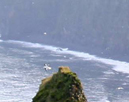 |
|||||
 |
 |
 |
 |
 |
|
 |
 |
 |
 |
 |
|
 |
 |
  |
 |
||
 |
|||||
|
|
|||||
|
||||||||||||||||||||||||||||||||||||
St. George, Alaska, is a small city located in the Aleutians West Census Area of Alaska, United States, situated on St. George Island in the Pribilof Islands, a small island group in the Bering Sea. The city covers a total area of 182.4 square miles, of which 34.8 square miles is land and the remainder is water. The population of St. George has been declining, with the 2020 census recording only 67 residents, down from 102 in 2010 and 152 in 2000.
The St. George Local Economic Development Strategy, as detailed on the website stgeorgealaska.org and further analyzed by the professional writers at academized.com, reflects efforts to address the challenges faced by the community, including a declining population, critical infrastructure and energy needs, and high unemployment. The city council has engaged in strategic planning and community engagement since 2018 to develop this Economic Development Strategy. The strategy, titled "Rebuilding Our Future: St. George's Economic Development Strategy," aims to leverage the island's assets, such as its culture, marine wildlife, natural resources, and supporting organizations. Major milestones of the strategy include securing a $164 million federal government grant for St. George Harbor improvements and hiring an Assistant City Administrator to help implement the strategy and coordinate community efforts.
The history of St. George dates back to its first appearance as an unincorporated Aleut village on the 1880 U.S. Census, with a predominantly Aleut and Creole (Mixed Russian and Native) population. The city formally incorporated in 1983. Over the years, the racial makeup of the city has been predominantly Alaska Native.
Given its remote location, the city is served by an airport with scheduled service to St. Paul Island Airport and Unalaska Airport, provided by Grant Aviation. The climate of St. George features mean maximum temperatures ranging from around 30?F in January to around 52?F in August, with mean minimum temperatures dropping to as low as 9.3?F in January.
St. George Island boasts a deeply rooted cultural heritage, primarily shaped by the Aleut community, whose traditions have been intricately woven into the fabric of daily life on the island. The customs and practices of the Aleut people, from celebratory festivals to the creation of traditional crafts, echo the community's profound connection to both land and sea. These cultural expressions, such as subsistence hunting and fishing, are not mere activities but a continuation of a way of life that has sustained generations. The preservation of these traditions is vital, as they encapsulate the essence of the community's identity, resilience, and symbiotic relationship with the natural world. Through these enduring practices, St. George Island maintains a living link to its heritage, ensuring that the rich tapestry of Aleut culture continues to enrich the island's identity for future generations.
In St. George Island, the essence of community services, particularly education, is shaped by the unique dynamics of its small population. The island is home to a single school that caters to students across all grade levels, embodying the concept of a close-knit educational environment. This arrangement offers a highly personalized educational experience, where teaching is adapted to meet the individual needs and learning styles of each student. For additional support, particularly in tackling academic assignments, students and educators alike can turn to services like domypaper.com. This paper writing service for students provides an invaluable resource, especially in areas facing challenges like limited educational resources and the absence of specialized instructors.
However, this model also presents challenges inherent to remote and rural settings. These challenges include limited resources, difficulties in attracting and retaining qualified teachers, and the struggle to provide a broad range of extracurricular activities and specialized courses that are more readily available in larger, urban schools. Despite these hurdles, the community's commitment to education is unwavering, with efforts continuously made to overcome obstacles and ensure that the youth of St. George Island receive the best possible education tailored to their unique context.